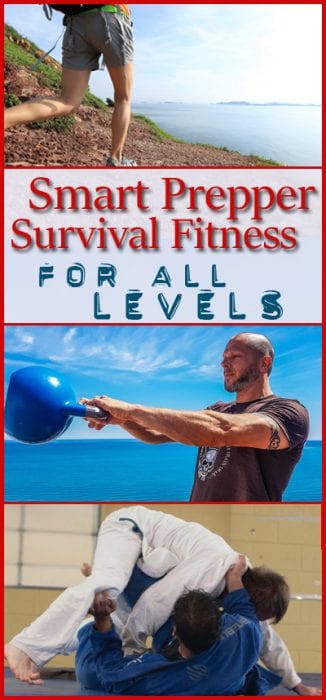It’s likely that during (and after) a SHTF scenario, the physical demand on the human body will drastically increase.
Our bodies would suddenly become responsible for filling the productivity gap left from the wake of downed mechanical systems.
If you want to learn how to prepare you body to take charge and be in control, read on.
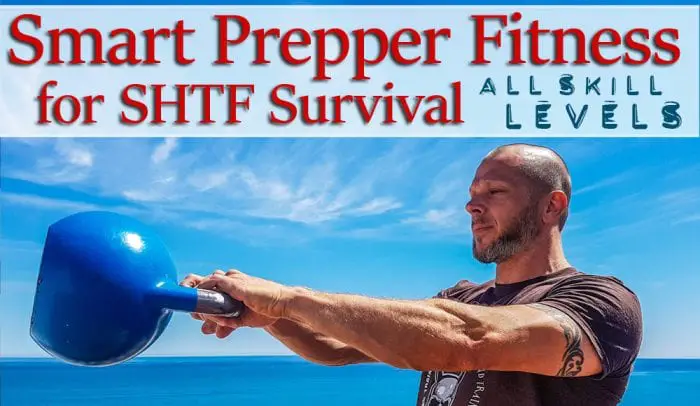
Life has become so easy most of us pay little notice the highly productive and efficient grid network built up around us and is working around the clock.
We are all guilty of doing less physical work in the modern era than our ancestors, to the point that sedentary lifestyles are not only becoming the norm, but are on the rise and have been classified as modern day health epidemic.
If many people were abruptly forced with no choice into a mode of high physical stress for survival reasons, many may not survive simply because their bodies are not accustomed to the level of physical demands required in a hypothetical emergency survival situations.

Not to sound overly nostalgic, but before computers, technology, and large-scale networked mechanical processes (AKA, the grid) was put into place, we had no choice but to work directly in and with the natural elements.
Rudimentary processes were used to procure food, water and shelter. Swinging and axe, pulling a cart, hauling buckets of water, travelling long distances, even running from or fighting off an occasional predator or rival group were the norm.
It’s undeniable that our bodies have evolved to not only to move, but move in many different and highly dynamic (non-static) ways.
Research has shown that hunters and gatherers would walk long distances and engage in short intense bursts of vigorous activity with rest in between, which resulted in burning 800 to 1200 calories per day.
In other words, the human genome was shaped by the process of natural selection to be highly active generalists in nature rather than marathon runners, heavy lifters or climbers.
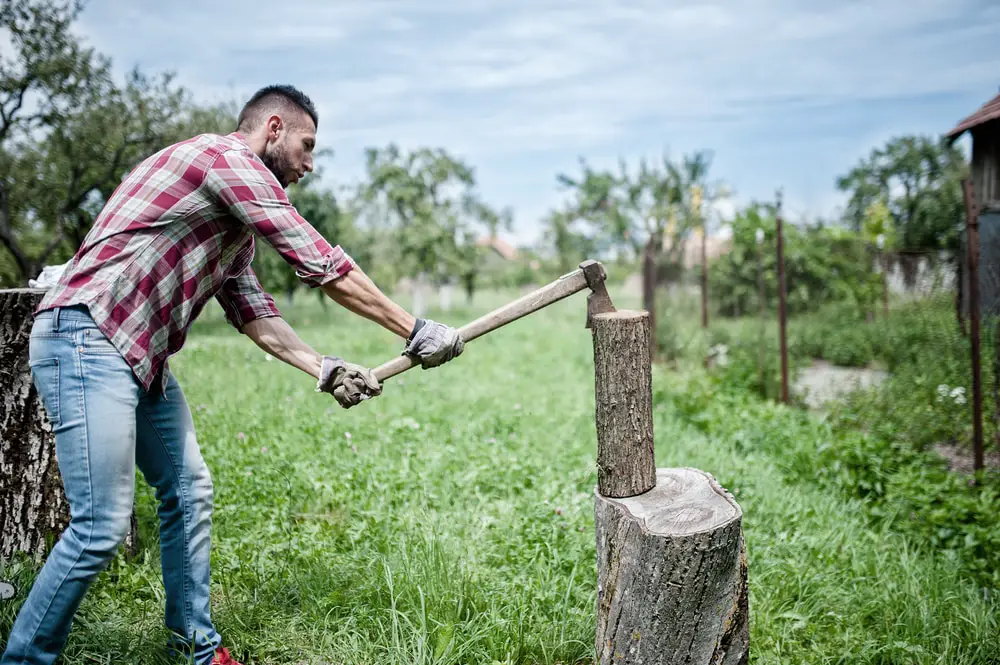
Whether forced into the wilderness or urban survival situations, physical fitness and mobility should not be overlooked or underestimated by prudent preppers.
No quantity or quality of gear, food stuffs, off grid energy, or EDC items can make up for a lack of physical ability (in the form of mobility, strength and agility) when an emergency situation demands it, especially if bugging in is not an option on one must get one the move.
When no choice remains but to leave it all behind and bug out is when situations could become extremely physically taxing which not only put you at risk but also friends and family who may be relying on you for your survival skills and physical preparedness.

The focus of this post is not to dwell on today’s sedentary health epidemic, or reminisce how hunters and gathers were maximizing the utility of their human design. Our intention is to lay out a plan that will enable individuals of nearly all levels of physical fitness to increase mobility and strength by moving in healthier ways more reminiscent of our ancestors.
As someone who went from being a deathly ill child with Crohn’s disease to practicing and instructing Brazilian Jiu Jitsu classes for the last decade, regularly doing outdoor fitness challenges and swinging kettlebells, I have full confidence anyone can do it if approached carefully. Credit is also due to my brother who is a veteran certified manual therapist and kettlebell trainer for consulting with me writing this post.

In this post, we will cover prepper fitness for all levels, from beginners to intermediate and advanced. Please skip to the section using the index at the top that is appropriate for your level of fitness. Here goes:
Beginner Prepper Fitness for SHTF Survival
This beginner series is for individuals who have remained sedentary for the past 12 or more months with little or no “real” physical exertion.
For example, if you are easily winded when going up a couple flights of stairs when the elevator is down, or when required to walk longer distance, walk uphill, and/or are considered obese, these beginner exercises are a great place to start.
Please note that results results from one individual to the next can vary greatly, so don’t get frustrated if you don’t see any progress for some time. Make these exercises a daily part of your routine, and before you know it you we be stronger, fitter, more mobile, and all of that good stuff!
Assisted or Solo Deep Body Weight Squats
This movement is excellent for building strength in the quads and gluts while increasing hip mobility. The hips are the foundation of most physical movement in the human body and are essential to movements as simple as walking and getting off the ground. A deep squat also serves a great seated position when if no chairs or stump, etc, is available.
Instructions:
Hold on to something such as a post at hip height, if needed. With your legs spread at a distance that feels natural, slowly sit into squat by engaging the quad muscles and gluts. Be sure while sitting to drive your heels into the ground and your knees away from each other.
Your feet should remain planted flat on the ground, and your butt should come to a resting position as as close to your heels as your comfort allows. If this position if uncomfortable or you are unable to maintain your balance, do not force it! Slowly stand back out of the squat and continue repeat the process until it becomes easier and more comfortable.
- Remain in the squat position for 30 seconds on and off to gain mobility and reduce pain.
- Once the squat position is comfortable, work up to 5-10 squat reps, then adding two to three total sets with similar reps.
Assisted or Solo Hanging
Being able to hang from a bar, tree branch, or even a ledge is important for survival climbing and general pulling movements like winding in a rope, dragging logs, etc . If you suffer from lack of overhead reach mobility, wrist or grip problems, simply hanging and letting gravity do the work is an excellent rehabilitation and strength building exercise.
Instructions:
To be clear, this is exercises is not a pull up, it’s simply hanging and letting gravity lengthen and decompress your spinal column and allowing your shoulders and arms to stretch. You can hang from anything that provides adequate grip surface such as a pull up bar, tree branch, or a ledge of a wall.
If your grip constantly slips and you are unable to hang at all, place something under your feet and ease in to a full hang by bending your knees to add or reduce the weight load on your grip.
-
- If needed, use support under your feet and build up to hanging for 10-20 seconds with no support.
- Once able to hang for 20 seconds with both arms, remove the support from your feet and ad two to four reps of 20 seconds.
Plank Hold
A plank hold is one of the best exercises for core strength and stability and it helps posture, improves balance, and strengthens hamstrings, gluts and the shoulder girdle. While hip mobility is like an axle being able to freely turn, core strength is the engine that gives it power.
Strength in other areas of your body, such as leg strength or back strength are often undermined if core strength is not adequate to back them up during more sophisticated and integrated movements such as climbing, pulling, or grappling. Therefore, nearly any movement relies on core strength making it a top priority for preppers in survival situations.
Instructions:
Place your forearms on the floor below the shoulders with your elbows and wrists in line with your torso. Use your toes to brace your weight with your forearms and use your core abdominal, thigh, and glut muscles to raise your hips to be alighted with your shoulders and legs. Keep your chin tucked while holding this position.
- Move into the plank hold and maintain it for 10-20 seconds
- Add two to three reps of 20 second holds.
- Build up to being able to hold the plank position for one minute or more.
Soft-Surface Medium Distance Slow Jogging
The aim of slow jogging is to build a foundation for cardiovascular and respiratory fitness without keeling over before building to more moderate to intensive cardio exercise. Look to run on a soft surface with some minor terrain variance such as a cut grass field or easy running trails.
A soft surface will allow your muscular-skeletal system to slowly adapt to the light impact of jogging, by adding bone density and building muscle, fortifying joints, tendons, and ligaments.
Jogging or running on varied terrain has shown to awaken the neuromuscular system by forcing it to make constant adjustments to adapt to the surface variations. Furthermore, it has shown to minimize risk of injury from over-repetitive movement which leads to imbalance from smaller muscles growing weak.
Instructions:
Find a soft yet slightly varied running surface such as a grassy field or mowed pasture. Start with jogging for two to five minutes and stop when you experience discomfort in your lungs and chest (cardiovascular system), or on joints and muscles (soft tissues).
At this point your body as reached a level of stress that your body can respond, adapt and build strength from. Build on that until you can jog at a slow, relaxed pace for about 15 minutes without stopping. This will allow you to cover about a one to 1.5 mile distance.
I hope these exercises benefit some of you who have struggled to get a solid start with fitness. Please feel free to message me or leave comments with any questions. Stay tuned for our next posts that will be geared towards intermediate and advanced survival fitness with extra fun and dynamic exercises for preppers.
Welcome to part two of fitness exercises for SHTF wilderness and urban survival. If the exercises in part one are too easy, or you have mastered them and are looking for an added challenge, these part two intermediate level exercises may be a good fit for you.
Intermediate Prepper Fitness for SHTF Survival
The theme from the first beginner section continues in this section by gradually building functional and integrated strength throughout the body.
Our goal is to start slow and build a strong foundation of core strength while avoiding strength imbalances from overdeveloping certain muscle groups while ignoring others. We are also looking to avoid movement repetition and impact, all in order to avoid injury.
Kettlebell squats:
As with nearly all kettlebell exercises, a major benefit of the kettlebell front squat is building core strength and stability. By positioning a kettlebell high on your chest while doing a squat, your body is forced to maintain a position many of us no longer frequent in our daily lives, which in turn builds muscle stability.
On the contrary, barbell squat or body weight squats primarily focus on engaging the lower body rather than lower, core and upper body while integrating all three regions.
If you are going to work with weights, kettlebells are the better alternative for functional strength because they integrate and strengthen all muscle groups. Integrative strength is important for survivalists and preppers because it will be the type of strength required during survival and emergency situations.

Instructions:
Place feet a little wider than shoulder width, with your toes pointed out slightly. Pick up the kettlebell by sitting down into a squat position and grabbing the bell by the “horns”. with your elbows in.
When you go down, breathe in through your nose and exhale on your way up. To keep you back in proper alignment, look up slightly when you do the squat.
When you reach the bottom of the squat make sure you don’t bounce, and keep your knees behind your toes while digging both feet forcefully into the ground. Create tension and snap your hips when you reach to top.
- Pick a suitable kettle bell weight that will allow you to complete two sets of 10 reps. At the end of the 10 reps, you should be about 60-70% to failure.
- As you progress, increase weight in 5 lb increments and complete the same set and rep quantities.
Pull ups and Chin ups:
The two most common grips are the underhand and the overhand grips. The easiest grip to start with is the underhand grip, or (the chin-up) because due to the elbow position, it optimizes the most efficient use of bicep and peck activation which in turn develops more strength in your pull up.
A pull-up, by contrast, using the overhand grip, primarily activates the lower trapezius more than a chin-up, but both are great exercises to strengthen the back.

Instructions:
A shoulder width grip using either the underhand or overhand grips is recommended because it reduces the strain on your shoulders and lowers risk of injury, and there is not a big difference in muscle activation between the two.
It’s also recommended to hold your back, pelvis, and legs in as straight and aligned as possible (rather than arching your lower back, bending your legs, and thrusting your pelvis forward).
Try to images having a rigid metal rod running through the entire vertical length of your body, from the top of your head to your feet. While this position is more difficult, it offers the advantage of building strength in the anterior muscle chain and core.
- If you are unable to do a full unassisted pull-up, do three sets of five reps of either body rows, or resistance-band assisted pull-ups. Adjust the difficulty as you progress by changing the angle of the body rows, or using a weaker resistance band.
- If you can complete one to four or more unassisted pull-ups, do your max reps, followed by the same rep quantity of negative pull-ups. Rest, then repeat this process two more times for a total of three sets (again, three to failure, each followed by equal negative reps).
Soft, Varied Terrain Interval Running
Interval training is a higher intensity level of running where you sprint at medium to maximum pace while walking or slow jogging in between, for a total of around 20 minutes. Research has shown that interval running will speed up metabolism much faster than regular running.
Furthermore, due to the rapid and successive twisting motion of your torso with your elbow pulling one way and your knee pushing the other, interval running is excellent for the core while also activating fast twitch muscle fibers.
As mentioned in the beginner fitness article, running on soft, slightly varied terrain is great for adapting the body to diverse movements in order to rehabilitate and condition all muscle groups, big and small while building strength throughout your physiology.
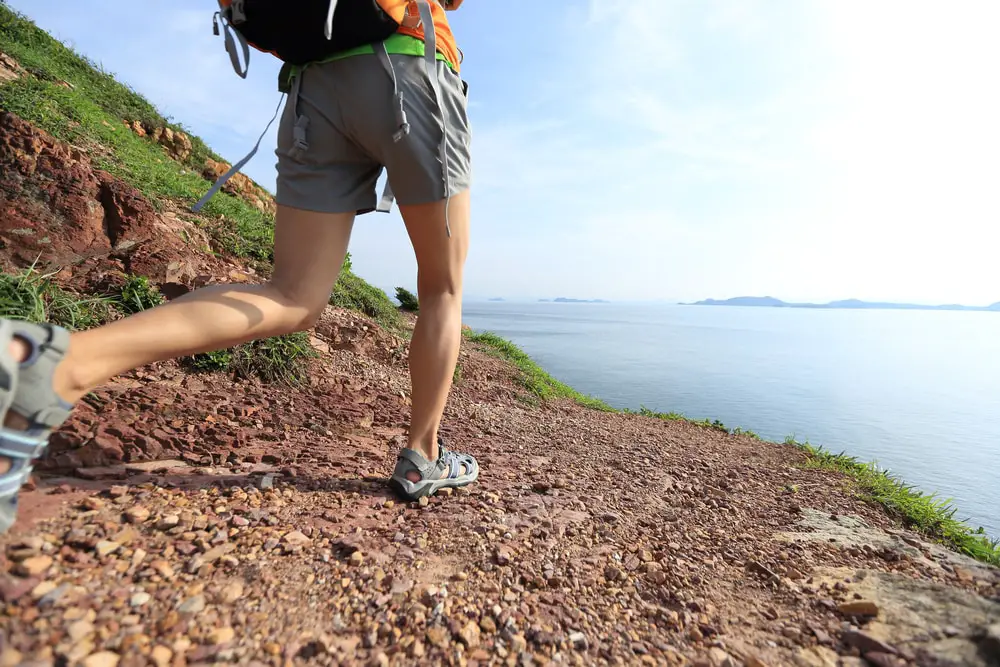
Instructions:
We recommend looking for trails with softer surfaces such as dirt, grass, or loose gravel rather than concrete that has someeasy 10-20 degree inclines and declines for added variance. Do a light jogging warm-up and stretching routine to reduce risk of injury.
- Start by running at a medium pace, then after roughly two minutes transition to about 30 seconds of 70% of your max speed.
- Complete three more cycles, but each time increase the max speed by 10%, so by the fourth cycle you are maxing out at 100%
- As you progress and notice your endurance and power increasing from your initial interval workouts, introduce running up inclines for your last one to two cycles in the workout.
Burpees:
Knowing how to do burbees is an powerful skill in fitness because they offer full body workout you can take with you anywhere you go!
All you need is your body and the knowledge of how to do them which you will see here. You can use burpees as a warm up exercise, or a core exercise in your workout. They are amazing for conditioning and building functional, integrated strength that starts with the core.
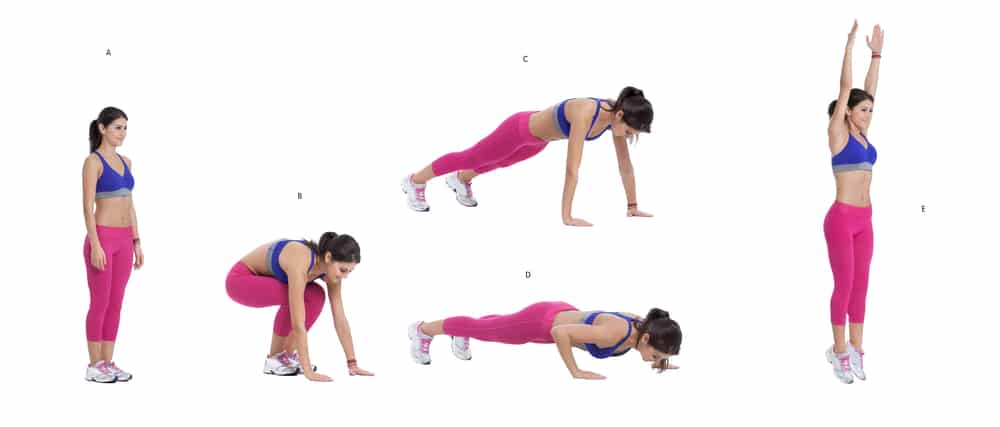
Instructions:
Start in squat position with the weight in the heels and remaining flexible in the toes. Then do a squat thrust while kicking the legs back so you are in a push up plank position. From this position to a pushup and transition immediately into a frog jump and then a jump squat to complete the burpee movement.
Throughout the process of these movements, it’s important for your limbs to absorb any contact with the floor like a shock absorber rather than being rigid and stiff. This will reduce harmful impact on your body and activate your muscle groups more effectively.
- Start slow and warm up with 10 slow burpees, mainly focusing on correct form without the squat jump.
- As your form improves and you get warmed up, increase the speed and add up to three sets of ten reps each.
Advanced Prepper Fitness Exercises for SHTF Survival
It is natural to worry about any human-made or natural SHTF, but it is better to be prepared, both mentally and physically. I have taken you through beginner and intermediate exercises, and I will now detail the exercises included in the advanced section.
In this section we will look at fitness routines, that again, emphasize gradually building integrated and balanced core strength as the foundation.
These exercises will take your mind and body to the next level to be capable of handling more extreme demands, such as those you might encounter in a SHTF survival scenario. If done right, these challenges will boost your strength and tolerance.
The key is to prevent the strength imbalances that come with focusing too much on particular muscle groups while others are left underdeveloped.
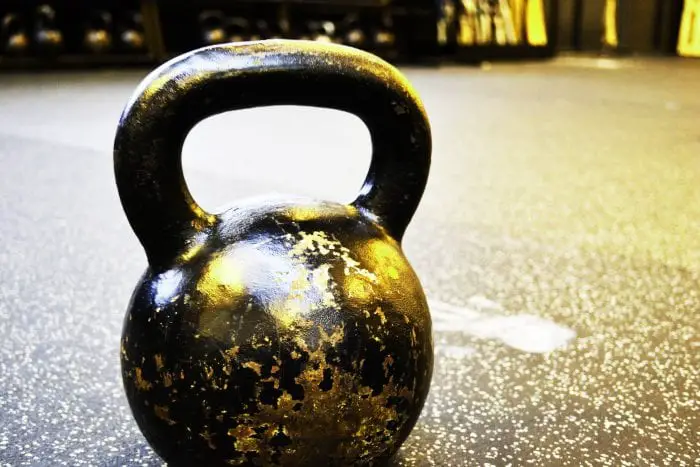
Upon moving into the advanced arena of advanced prepper fitness, I will introduce additional kettlebell exercises. I will also recommend the most proven martial art practices, along with (oh yay!) more running.
You can combine with any combination of exercises I introduced in the beginner and intermediate fitness section.
Kettlebell Swings:
The kettlebell swing is a total-body strength exercise that will have you burning tons of calories. The kettlebell is typically swung starting from between the knees to fully overhead or at eye-level. To start, make a powerful hip thrust with your hamstring muscles and glutes.
These muscles are part of your “power zone” and the swings will boost your muscular power. Using the kettlebell will also improve your muscular endurance. Kettlebell swings target a combination of essential muscles, including quadriceps, arms, glutes, lower back, and hamstrings. The exercises are also recommended for increased aerobic and anaerobic capacities.

Instructions:
Start by doing a standing plank, where your abs are tight, and your head is aligned with the spine. The other position you will be doing is a hip-hinge position. Your knees should be soft and not bent and should not be in a squat. To engage your core, keep your arms long and squeeze your shoulder blade together.
Grasp the kettlebell to start and pull it back your legs to generate momentum. Drive through the heels, and explode through hips to send the weight swinging upwards. You should not squat too much, and you can use an item like a foam roller to gauge if you are doing deep squats.
As the kettlebell starts to descend, allow the weight to do all the work as you prepare yourself for another rep. Shift weight into heels while maintaining hinged hips and load your glutes and hamstrings.
Ensure you do not bend too much. Doing a squat makes the exercise an up and down movement instead of an explosive thrust. There is also the possibility of swinging too low. The bell should actually tap you in the butt if it is perfect.
Turkish Get-Ups
The Turkish get-up is a historical exercise, believed to have been invented by traditional wrestlers in Turkey as preparation for grueling matches. It is not a single movement since you will be performing multiple motions harmoniously.
Holding a weight during exercise will challenge your core since it needs to keep your torso upright as you lunge, bend, and twist. The getups also increase your coordination, body stability, balance, and awareness. The movements also facilitate cross lateralization, that is, the right side of the brain works with the left one.
Instructions:
The first step is to raise the bell with the right hand. Maintain a 45-degree angle with the left arm and match it with the left leg. Steadily lift the bell straight up and lock out the right elbow. Your eyes should be fixed on the bell throughout the exercise.
Press the right foot firmly on the floor, and roll up onto the left elbow with the bell held up high. You will form a partial-sit up with your elbow as support and on your left butt cheek. Continue rolling up till you support your weight on the left hand. Your right foot, left hand, and left butt cheek will be the bases of support.
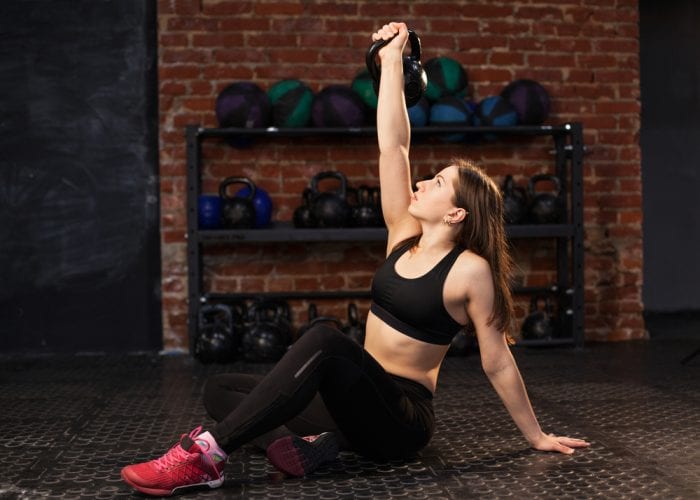
Squeeze your glutes, after which you will lift your hips from the ground while keeping your arm extended vertically. Your left hand and the right foot will be the only bases of support since your hips are off the ground. Sweep the left leg under your body to a point where your knee is situated on the ground beneath you. Your legs will be about 90 degrees from each other.
Take your left hand from the floor and bring your body to an upright position. “Windshield wiper” the leg on the floor until the legs lie parallel in a lunge position. Stand up from the lunge with the bell overhead, and your core tightened.
Step back into the lunge and place the left leg perpendicular to the right. Sweep the left leg forward and slowly drop your butt to the floor. Lower your torso down onto your back and shoulders. Lower the bell to your stomach. Do more reps to build your stamina.
Overhead Snatch
The kettlebell snatch is among the most effective power exercises that engage the full body. It works the hamstrings, shoulders, back, and quads. The speed of the snatch and the muscles that are involved burn a substantial amount of calories.
It is a strength exercise that challenges and strengthens muscles. Because it is done explosively and quickly, the snatch additionally challenges a person’s aerobic system. Your mobility and stability will also receive a boost from engaging in the movement.
Instructions:
Basically, the snatch adheres to some principles of the kettlebell swing, but it allows the weight to come straight out at the top. The kettlebell should be kept close to your body with the snatch. With the snatch, it will be imperative to learn how to tame the arc. As you pull the bell up from between your knees, do it with a bit of a shrug.
Your hand should move around the bell and punch through and not the bell moving around you. The bell should rest against the back of your arm once it is overhead. A snatch should be perfumed in one smooth motion. Reverse the movement when you are ready to lower the kettlebell.
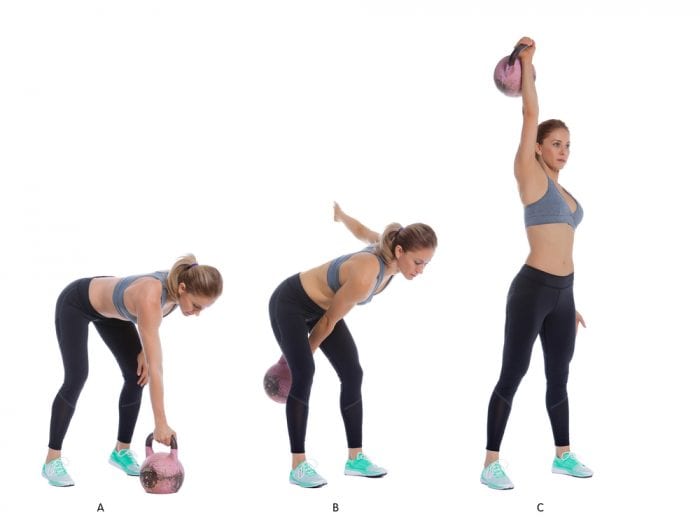
To master the snatch, you will need to develop a sound swing. The swing represents the primary action in the exercise, and you will need to grasp it for your snatch to be solid. You can do this by practicing through numerous one-arm swings.
Many people are understandably hesitant to throw a heavy weight overhead. To counter this fear, you can spend some time on pressing and getups. They build shoulder stability as well as help you assume the correct arm, hand, and wrist posture at lockout.
Relax your grip, so you do not end up with a torn hand. The kettlebell rotates continuously during the lift, so do not handle it like a dumbbell.
Brazilian Jiu Jitsu
Brazilian Jiu Jitsu (BJJ) has exploded in growth in the US, and for plenty of good reasons. Ever since Hoyce Gracie graced the octagon at UFC 1 in November 1993, he proved to the world the effectiveness of BJJ. It has since gained substantial respect of nearly all MMA fighters, where it should be noted that in the UFC submissions made up nearly 18% of fight wins in 2018.
Integrated Core Strength
Ok, so BJJ has been effective in MMA but what does that have to do with prepping, fitness and your life? First, I can say from first hand experience that BJJ is one of the most physically demanding activities you can partake in, and as a result, can build incredibly integrated and practical physical strength originating from the core.
The reason why is BJJ warm ups, drills, and sparring (rolling), targets muscle groups in dynamic and nuanced ways. It’s akin to a swimmer pushing against swirling, churning water, except with BJJ the water and swirling is backed by human intelligence and is replaced by appendages. And the human mind behind each set of appendages (different opponents) and the appendages themselves are highly varied in strength, skill, and movement patterns.
Where does the leverage originate from in building the strength behind BJJ? You guessed it, your core, or more precisely, the hips. After taking a few BJJ classes, you will begin to see the pattern emerge that many techniques and various movement patterns in BJJ relate to, and rely on positioning the hips for success.
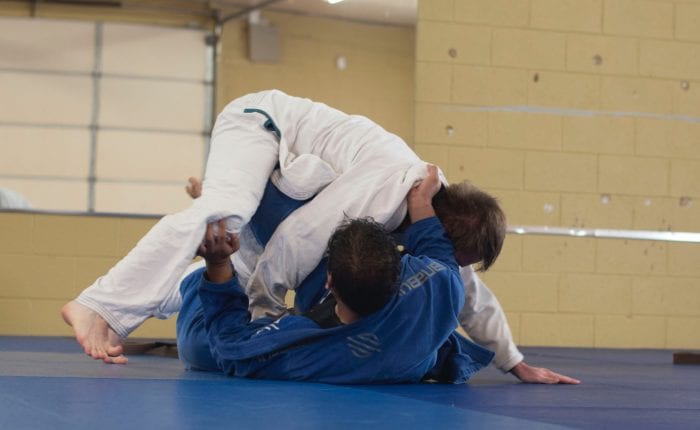
Chess using your Body & Mental Acuity
This leads me to the second benefit of BJJ. Since it’s like a chess match in that there are an infinite array of physical movements, or techniques as we say, that you can impose on your opponent and that your opponent must counter, BJJ is excellent for building mental acuity. I’ve hear it referred to as chess for your mind and body.
As a result, Not only does BJJ integrate your physical strength, it integrates and forges a greater connection between the synapses in your brain that connect to your muscles.
Mental Health & Remaining Calm Under Pressure
One thing lacking in modern culture is comradery, community, and a sense of belonging. To often we see ourselves has being separate from everything, when in reality humanity is more intricately connected than what I believe even science can prove today.
We evolved in clans with complex social dynamics and hierarchies wove the fabric of cooperation and therefore, survival. We dealt with things together, not head on alone.
I believe another reason BJJ is successful and there are thriving academies everywhere is due in part to a culture that craves connection and longing for belonging. BJJ helps fill this missing link in our ancestral chain.
It helps ease mental suffering, depression, and the sense of dark lonely isolation that our cell phones, TV, and other material possessions can never replace. In their place rushes in clam and peace.
This is why BJJ in particular is great for prepper fitness. The three benefits mentioned are essential to SHTF survival. In fact, you could argue that the core elements of survival are mental and physical strength, acuity, and being able to handle emergency situations with calm and cool.
Last Line of Self Defense
While there are dozens of leveraging tools, techniques, and skills for self defense, it is argued by Jacko Wilink and others that BJJ is one of the best skills to build as last resort for defending yourself from a straight flesh on flesh physical encounter.
Of course if you are bringing only BJJ to a knife or gun or tazer, or pepper spray conflict, your best choice (and that is, if you have the choice) may be “Run-Fu” as coined by my mentor John Corria.
If you opponent is not versed in martial arts, BJJ will give you the advantage even against larger opponents. Even if they are versed in striking for example, or have an overwhelming flail charge with their fists, BJJ teaches you how to close the distance and get too close in for their strikes to be effective.
From there, gravity combined with some basic takedown techniques will allow the fight to go to the ground where can can go to work with (preferably) a choke, but a joint lock if a choke is not possible. At the very least BJJ skill will allow you to secure a dominant position to control the assailant until more help can arrive or the situation calms down.
Additional Prepper Fitness Ideas
Alternative Martial Arts: Other martial arts can offer a similar albeit less concentrated array of benefits, as BJJ, especially with building mental acuity and community. Areas where other martial arts may fall short are with building core strength and practical self defense. I would highly recommend Muay Thai, Boxing, Kickboxing, Judo, Sambo, and wrestling as alternatives or supplements to BJJ
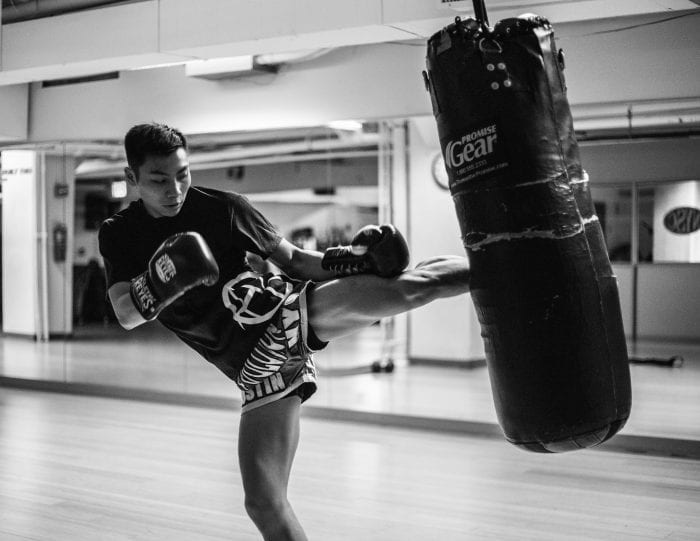
Obstacle course races are similar to martial arts in they challenge the mind to coordinate with the body to generate dynamic and nuanced movements that help develop core strength. There are several races held throughout the country such as the Savage Race, Rugged Maniac, Spartian Race, to name a few.
SERE training and other tactical survival and operations course are available to civilians to help develop core areas necessary for different survival situations. SERE training means stands for survive, escape, resist, evade, all points relevant to preppers. With these courses you will quickly build mental, physical strength, and hard skills and techniques to deal with natural and human threats.
There you have it, now go get it. Developing mental and physical fitness is not easy, but good things rarely are. It’s toughest as you build, and gets easier and more rewarding (and addicting as you go).
If you’re struggling to get started, just get started. Somewhere. Anywhere. It does not matter how or with what. The point of this article is provide a guide on how and what to start with from the most basic level to advanced. Now you have no (or at least fewer) excuses.

